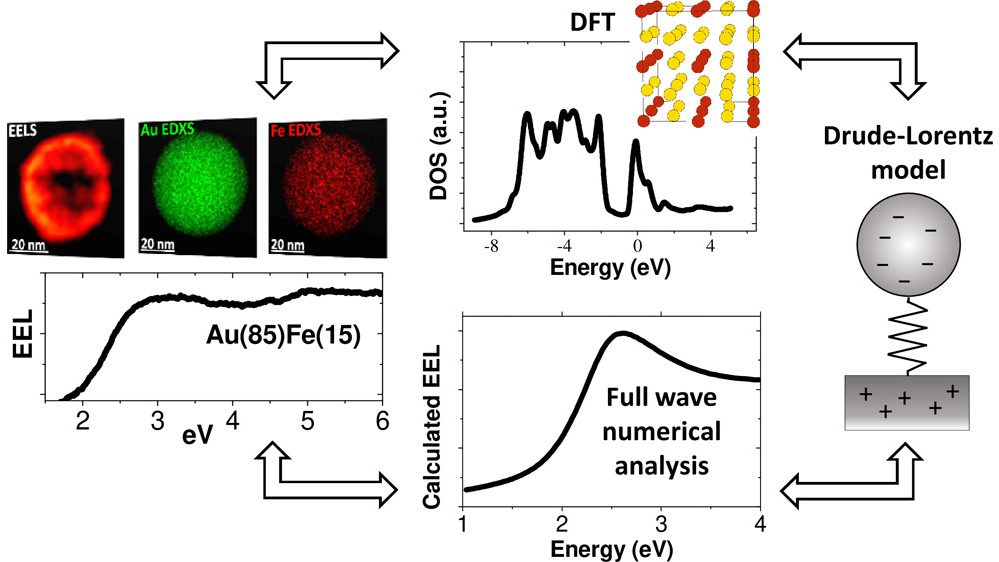
The prospect of creating nanoparticles with a combination of plasmonic and magnetic properties – so-called “magneto–plasmonics” – is interesting for potential applications from nanomedicine to plasmon-enhanced catalysis. In this new paper published in Nano Letters, we use correlative electron energy-loss spectroscopy and energy dispersive X-ray spectroscopy to relate the plasmonic properties of individual Au-Fe nanoparticles to their composition. In this collaboration between LSME scientist Duncan Alexander with Vincenzo Amendola and colleagues at the University of Padova, and Olivier Martin’s Nanophotonics and Metrology Laboratory at the EPFL, the experimental results are further compared to in-depth theoretical studies via a full wave numerical analysis and density functional theory calculations of electronic structure. We show that, as the iron fraction increases, the plasmon resonance is blue-shifted and significantly damped, as a consequence of the changes in the electronic band structure of the alloy. The study provides new opportunities for the control of the optical response in Au–Fe and other plasmonic nanoalloys.